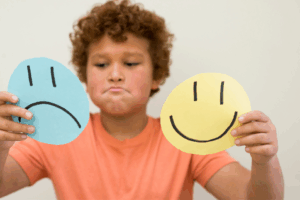Life is not black and white, there’s some gray nuance to it! ~ Pilou Asbaek
Grey Color psychology is a field that studies the impact of colors vis-à-vis the behavior of human beings. The phrases such as Feeling Blue or Red in the Face, are commonly used in the English Language to indicate that people associate colors with different feelings and emotions. Science Daily published research in the year 2010 stating that people who are affected by anxiety or depression often use the color gray to express their emotional state. Remember when in Disney’s cartoon, Winnie Pooh’s pessimistic and depressed friend Eeyore was a grey-colored character? Even for centuries, artists have painted sad or melancholic images using the low light hue in their paintings! What is it with sadness, depression, and the color grey?
About Color Grey
Grey is quite enigmatic color. It represents neutrality, depth, and complexity. From the vivid and barren forest paintings to the simple monochromatic self-portrait, grey is a color of emptiness. It is a color of silence but conversely a loud expression of oneself.
What Is Depression?
The feeling when one’s world appears colorless! It is a medical illness that impacts and impairs everyday tasks! The person who feels depressed is often struck by excessive disinterest in every day/ routine activities and finds it hard to get pleasure from anything! Overpowering emptiness, sadness, loss of hope, interest, grief, and despondency. It is normal to feel sadness. Negative emotions are also a part of the human experience however, prolonged sadness and eventual disinterest in life’s activities, loss of appetite, and recurrent thoughts of finding no meaning in life should be alarming. Depression is no joke and as per statistics provided by the World Health Organization (WHO) three hundred million people are victims of depression!
Depression And The Color Gray
Depression is also called the blues, but it is linked to the color gray. Why is that so? The truth of the matter is that depression is a feeling that makes the world appear gray, dull, low, and unappealing – not bright at all! In terms of psychology, the inability to perceive colors during depression could lead to the association of the color gray with the dreariness of depression! Sadness impacts the visual process, which affects the light entering and being processed by your retina.
Thereby, extensive, or deep-rooted sadness affects the visual capabilities to make the world appear colorless and bland! Scientists also prove that depression creates a visual deficit due to serotonin imbalance. This makes the world appear vivid and monochromatic despite it being full of colors! Therefore, how you are feeling can impact your perception of reality which affects depression because the world seems more and more unappealing, gloomy, and grey amidst one’s tumultuous thoughts!
Can The Grey Color Trigger Depression?
While there is a close association between the grey color and depression, it is important to note that to the depressed being the world appears grey color however, there is no proof that the grey color itself can trigger melancholy or depression. The science behind this is the visual impact of depression on the eyes which impacts the perception of reality. However, depression can be triggered by several factors such as,
- Seasons: Seasonal Depression is called Seasonal Affective Disorder which abbreviates to SAD! WebMD claims that the darkness, shorter days, and less light in the winter season trigger depression. Again, here the grey color may seem significant, however, the color itself is not triggering depression but rather the season and its underlying impact such as changes in day duration, which in turn causes changes in one’s sleep cycle, shortage of vitamin D, etc. causing depression!
- Trauma: Many things can traumatize us as individuals. Loss of a beloved person, childhood bullying, neglect, etc. can be causes of trauma.
- Toxic Environment: Exposure to toxic and abusive environments can traumatize one’s brain and lead to depression.
- Loneliness etc.
Understanding Why Your World Appears Grey Color!
If you want to embark on the journey of understanding your depression and why your world appears grey color and why you cannot distinguish clearly decipher the colors black and white, then it is your first step toward saving yourself from the adverse repercussions of depression such as self-hatred and self-harm. It is foremost advisable that you seek medical intervention as soon as you find yourself drifting more into the depths of this gray abys and sinking feeling! To date, depression is treated through the help of medical professionals, psychiatrists, and psychologists who delve deep into your life’s history to unravel the truth of this recurring sadness. Once you understand yourself, you begin to treat yourself better, and be guided to handle your anxiety and depression!
These symptoms are you sign that you need to take measures to turn your grey color world into a canvas filled with colors once again!
- Disturbed circadian rhythm
- Loss of appetite
- Prevailing tiredness
- Lack of interest in mundane activities
- Lack of interest to even get out of bed and go about your day!
- Self-loathing, self-image issues
- Inability to focus, concentrate, or pay attention
- Sore muscles and declining health overall
- Frustration and restlessness
- Thoughts of death, finding peace in the thought of death
Conclusion
Depression is a serious medical condition. It hampers the ability of people to conduct themselves or carry out day-in-day-out activities with ease. When you begin to feel everything appears grey color, bland, and dull you must be alarmed about the declining state of your mental health and immediately seek medical consultation! Confiding in friends if you are going through a rough patch would help you to feel less despondent as friends can turn your gray day into a fun-filled day. In any way though avoiding seeking psychiatric help is a mistake because every part of our body may get overworked and require a doctor. Break the taboo associated with mental health and seek psychologist or psychiatrist help ASAP! You matter!



